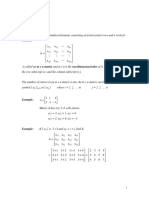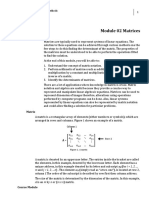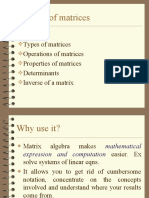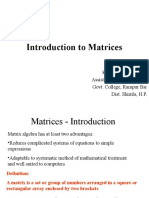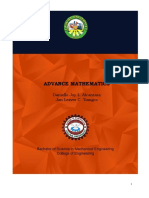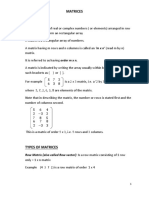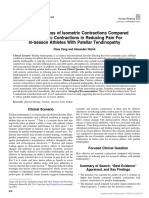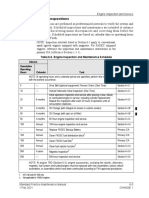0% found this document useful (0 votes)
77 views43 pagesMatrices for IT and Business Students
This document provides an introduction to matrices. It defines what a matrix is and explains that a matrix is a rectangular array of numbers arranged in rows and columns. The document then discusses different types of matrices including column/row matrices, rectangular matrices, square matrices, diagonal matrices, identity matrices, null matrices, and scalar matrices. It also covers how to determine the size of a matrix, transpose a matrix, and perform basic operations like addition and subtraction on matrices. The key topics covered are the basic definition of a matrix, different types of matrices, sizing matrices, transposing matrices, and performing addition and subtraction on matrices of the same size.
Uploaded by
zulieyanaCopyright
© © All Rights Reserved
We take content rights seriously. If you suspect this is your content, claim it here.
Available Formats
Download as PDF, TXT or read online on Scribd
0% found this document useful (0 votes)
77 views43 pagesMatrices for IT and Business Students
This document provides an introduction to matrices. It defines what a matrix is and explains that a matrix is a rectangular array of numbers arranged in rows and columns. The document then discusses different types of matrices including column/row matrices, rectangular matrices, square matrices, diagonal matrices, identity matrices, null matrices, and scalar matrices. It also covers how to determine the size of a matrix, transpose a matrix, and perform basic operations like addition and subtraction on matrices. The key topics covered are the basic definition of a matrix, different types of matrices, sizing matrices, transposing matrices, and performing addition and subtraction on matrices of the same size.
Uploaded by
zulieyanaCopyright
© © All Rights Reserved
We take content rights seriously. If you suspect this is your content, claim it here.
Available Formats
Download as PDF, TXT or read online on Scribd
/ 43

























